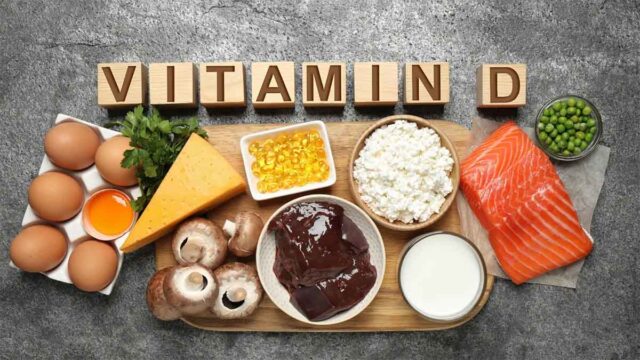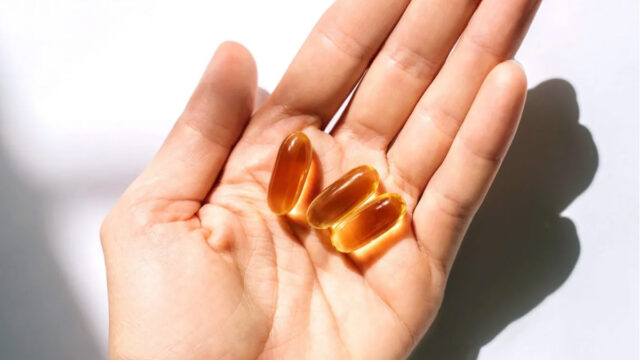How many of you worry that you might be deficient in Vitamin D? The raised hands will be few. Vitamin D deficiency is almost always ignored because it is often believed that it does not have serious implications on health. But this cannot be further from the truth. And the pandemic has done us no good by restricting us within the four walls of our homes for months on end. No wonder, there is a raised incidence of Vitamin D deficiency since the beginning of the pandemic. Remember feeling tired and surprisingly low in energy very often and far too soon? You now know why that may have happened.
The Channel 46 has collaborated with Dr Anjali Kumar, MBBS, MD & Former CEO at Just Diabetes, to explain the symptoms, causes, and diagnostic procedure for Vitamin D deficiency and discuss the lifestyle changes you should embrace to treat and prevent this deficiency.
11 Possible Symptoms & Risks Of Vitamin D Deficiency
The symptoms of health conditions induced by Vitamin D deficiency are often subtle, which makes it a challenge for them to be diagnosed in their early stages. However, abysmally low levels of this vitamin can pose serious health risks, even if they don’t manifest themselves. Some of the most common symptoms and health risks of vitamin D deficiency are as below.
- Low energy levels among young adults
- Muscle weakness
- Pain in the bones
- Severe asthma among children
- Cardiovascular conditions & death in severe conditions
- Type 1 & Type 2 diabetes
- Multiple sclerosis
- Glucose intolerance
- Hypertension
- Cancer
- Cognitive impairment
2 Possible Causes Of Vitamin D Deficiency
1. Insufficient Intake Of Foods Rich In Vitamin D
This is common among people who do not include enough foods that are rich in Vitamin D in their daily diet, most specifically those on a strict vegan diet. Vegan foods eliminate major Vitamin D food sources, most of which are animal-based. These foods include fish and fish oils, fortified milk, egg yolks, etc. For vegetarians, cheese is a great source of the vitamin for vegetarians, along with fortified foods like cow’s milk, yoghurt, tofu, and plant milks of almond, soy, rice, and hemp. That apart, you can maintain the required level of this vitamin through the intake of Vitamin D supplements on the recommendation of your doctor.
2. Lack Of Exposure To The Sun
Your body manufactures this vitamin when you’re outside during the daytime. So, when you’re not spending enough time outside, your body does not get enough opportunities to make Vitamin D.
One cannot emphasise enough on sunshine being one of the primary sources of Vitamin D. Your body manufactures this vitamin when you’re outside during the daytime. So, when you’re not spending enough time outside, your body does not get enough opportunities to make Vitamin D. As a result, the deficiency is often more common among people whose occupation restricts them indoors. It can also be more prevalent among people who live in cold climes. As much as sunlight is important to prevent Vitamin D deficiency, make sure that you avoid overexposure to the sun as that is most likely to lead to a different set of health conditions.
Read: 10 Foods Rich In Healthy Fats That Must Be A Part of Your Daily Diet
4 Things You Should Know About Daily Vitamin D Intake
- The normal level of Vitamin D in blood is considered to be 8,000-9,000IU. Anyone with Vitamin D levels below this limit is considered to be insufficient in this vitamin, while anyone with Vitamin D levels over this limit is said to have an excessive quantity of this vitamin in their blood. However, medical experts are yet to come to a consensus regarding the amount of this vitamin that is essential for the body.
- The required intake of this vitamin D may vary depending on age and health conditions.
- For people with little or no exposure to the sun, 2000IU of vitamin D per day is essential for them. However, the experts are divided over the required intake of the vitamin in this context, with some experts recommending that 400-800IU per day is sufficient for people of this category.
- It is prescribed that you get plenty of sun exposure over and above your daily intake of the vitamin through your daily diet.
Read: Does Green Tea Promote Weight Loss? A Nutritionist Spills The Tea
Diagnostic Procedure For Vitamin D Deficiency
The medical test that is recommended for evaluating Vitamin D level in the blood is the 25-hydroxy vitamin D blood test. The normal level for healthy people is considered to be 20 nanograms/millilitre to 50 ng/mL. A level below 12 ng/mL indicates a deficiency of this vitamin.
3 Lifestyle Changes & Treatments For Vitamin D Deficiency
1. Ensure You Go Out Enough At Daytime
As mentioned earlier, there is no better natural way to maintain your normal Vitamin D levels than exposing yourself to the sun.
As mentioned earlier, there is no better natural way to maintain your normal Vitamin D levels than exposing yourself to the sun. However, in a tropical climate like ours where the sun’s rays are usually always harsh, make sure that you cover your skin as much as possible with full-sleeved clothes, scarves, and hats to protect yourself from the harmful effects of the sun like sunburn and cancer in severe cases.
2. Incorporate Dietary Changes
The non-medical lifestyle change that you should undertake if you have been diagnosed with Vitamin D deficiency is to incorporate enough foods that are known to be rich in this vitamin in your daily diet.
3. Take Supplements
If you don’t have enough time to go out into the sun or live at a place where sunshine is sparse, you will need to make sure that you maintain the required levels of Vitamin D by taking supplements. Even though Vitamin D supplements are available over the counter (OTC), you can take the advice of your doctor before investing in one.
Open up like never before and participate in conversations about beauty, entrepreneurship, mental health, menstrual & sexual health, and more. Desi women, join our community NOW!



